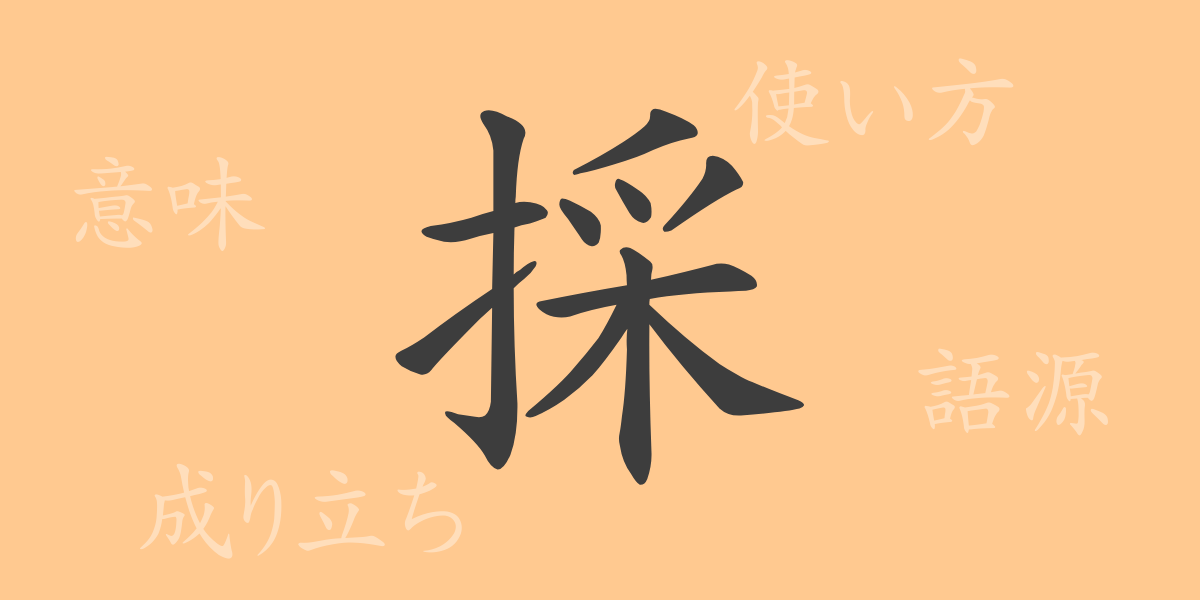The history and meaning embedded in a single kanji character speak to the depth of Japanese culture and language. This time, we will delve into the common-use kanji “採” (sai), which is frequently used in daily life. In this article, we will unravel the full scope of “採” (sai) from its etymology, meanings, usage, readings, and idioms. Through this kanji, feel the rich world behind the words.
Etymology of 採 (sai)
The kanji “採” (sai) has its origins in ancient China. Derived from pictographs, this character originally depicted the act of picking fruit by hand. Over time, its form and meaning evolved and were used in various cultural contexts, but the basic meaning of “picking” or “taking” has remained.
Meanings and Usages of 採 (sai)
The kanji “採” (sai) means “to pick,” “to select,” or “to take.” It has a wide range of applications, such as in “採集” (saishū, collecting), “採用” (saiyō, adoption/employment), and “採掘” (saikutsu, mining), each used in different situations.
Reading, Stroke Count, and Radical of 採 (sai)
The kanji “採” (sai) has multiple readings in Japanese, depending on the context.
- Reading: In the on’yomi reading, it is read as “サイ” (sai), and in the kun’yomi reading, it is read as “と(る)” (to-ru).
- Stroke count: It consists of 12 strokes.
- Radical: The radical is 手 (tehen, meaning hand).
Idioms, Phrases, and Proverbs Using 採 (sai) and Their Meanings
There are many idioms and phrases in Japanese that include “採” (sai), each showcasing the richness of Japanese expressions. For example, “採点” (saiten) means to grade an exam, and “採掘” (saikutsu) refers to extracting minerals from the ground. Additionally, “花を採る” (hana o toru) literally means to pick flowers but is also used metaphorically to mean selecting something beautiful or valuable.
Conclusion on 採 (sai)
Through this article, we have explored the multifaceted charm of “採” (sai). Even a seemingly simple kanji has a rich history and meaning behind it, enriching Japanese expressions. When you encounter “採” (sai) in daily life, remember the knowledge you have gained today. Understanding the meanings embedded in each word allows for deeper communication.

























